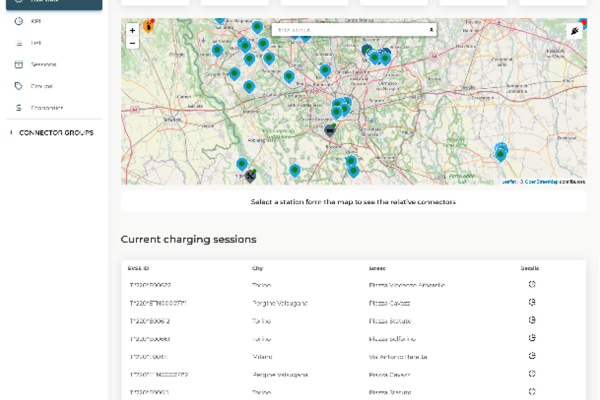Explaining business car writing down allowances

THE last time we bought a company car for our business there was an expensive car leasing disallowance and a balancing charge on the sale. This seems to have changed under the most recent capital allowance rules. I really could do with some clarification on business car allowances, and what would be most tax efficient for our company?
Paul Bulloch, managing director of Concept Vehicle Leasing, provides the answer on writing down allowances.
HER Majesty’s Customs & Excise carries the slogan Tax doesn’t have to be taxing. However, when it comes to the subject of capital allowances and business car taxation, many business owners find it difficult to understand what the rules are. So, rest assured, you are not alone!
Let’s just recap a moment. On 01 April 2009, new capital allowance rules came into force designed to encourage businesses to procure company cars with lower CO2 emissions. Essentially, there are greater tax advantages to those who procure ‘greener’ business cars.
The key emissions tax break is 160g/km. Regardless of whether you lease or buy your business cars, those cars with a CO2 rating below 160g/km provide greater taxation benefits than those over this limit.
One piece of advice on this: if you are considering a car with emissions close to the 160g/km, some manufacture cost options can actually increase the car’s CO2 rating and above the crucial 160 tax break, which could prove a costly error. So it’s worth checking with your dealer or leasing company before placing your order.
There are different rules which apply to company car writing down allowances, depending on whether you choose to lease or purchase your business car.
Buying a business car
If you choose to purchase a company car through your business and add the vehicle to your business assets, then you will be able to deduct a proportion of the cost of the vehicle from your taxable profit and reduce your tax bill. This type of deduction is known as a capital allowance.
When you purchase assets for your business, the value of these assets is placed in a ‘pool’. The pool they are placed in is dependent on the amount the asset may be ‘written down’ against your taxable profit – for example, you may have purchased furniture or a computer for your business, and these assets would be placed in a ‘Plant and Machinery Pool’.
Under the recent changes to tax legislation, cars which emit less than 160g/km in CO2 can go into a pool with other plant and machinery. In this ‘pool’, the cost of the vehicle may be written down at 20% per annum.
Vehicles which have a CO2 rating above 160g/km are placed in a 10% ‘pool’ with items such as ‘long-life’ assets and ‘integral’ fixtures in building, and it will therefore take much longer to benefit from tax relief on these vehicles.
In both cases, the percentage claimed back will be on a reducing balance basis, so the business will be able to claim less each year as time passes.
However, for vehicles which have a CO2 rating below 110g/km, businesses can claim 100% of the capital cost in the year of acquisition against their taxable profits. This is continuing until at least 2013. (Note: In order to qualify for 100% tax relief, the vehicle must be unused and not second hand.)
Under the capital allowance taxation rules prior to April 2009, when the asset was sold, there used to be a ‘balancing allowance’ – that is the difference between the sale proceeds and the tax written down value. So, when a business came to sell the vehicle, the business could claim this balance against their taxable profits – to which our reader refers.
However, under the new rules, the asset is in a ‘pool’ with lots of other assets, and on the sale of the vehicle, the proceeds are applied to this pool, so this ‘balancing allowance’ rule does not apply. This means that some of the tax relief available is pushed into future years, which means that a business could still be claiming relief on a company car long after it has been sold.
Examples of business car capital allowances
BMW 320d EfficientDynamics 4dr
- CO2 Rating of 109g/km which therefore qualifies for 100% tax relief
- Purchase cost of £27,900
- Corporation tax rate of 28%
- Writing down allowance is 100% in first year, saving £7,812 in tax
VW Golf 2.0 GT TDi 140 5dr
- Purchase cost of £22,050
- Corporation tax rate of 28%
- Writing down allowance is 20% per annum on a reducing balance basis
- Year 1: 20% of £22,050 would be £4410. Tax relief at 28% = £1234.80
- Year 2: Original value of £22,050 minus £4410 = £17,6408
- So, in Year 2, 20% relief would be available on this equalling £3528. Tax relief would be £987.84 and so on.
Crucially, there is no balancing allowance, so the vehicle will continue to be written down at the same rate long after it’s been sold.
It’s worth noting that the general rule for capital allowances has always been that the expenditure is incurred when there is an ‘unconditional obligation to pay’, providing that it is paid for within four months.
What about the allowances on car leasing?
As with purchasing a business car, the amount of lease rentals a business can claim against their taxable profits depends on the car’s CO2 emissions.
If the vehicle is under 160g/km CO2 (including those which emit 110g/km or less), then the business may offset 100% of the lease rental payments against their taxable profits.
If the vehicle emits over 160g/km CO2, then there is a 15% restriction on the amount the business can claim against their taxable profits, so just 85% may be recovered.
Example of business car leasing allowances
VW Golf 2.0 GT TDi 140 5dr
A typical contract hire monthly rental on this vehicle would be £279.49 + VAT per month. This equates to £3,353.88 a year.
The CO2 emissions on this car are 129g/km, so 100% of the lease rentals may be deducted from a company’s profits. A company paying corporation tax at a rate of 28% would therefore be able to save £939.09 on their tax bill.







